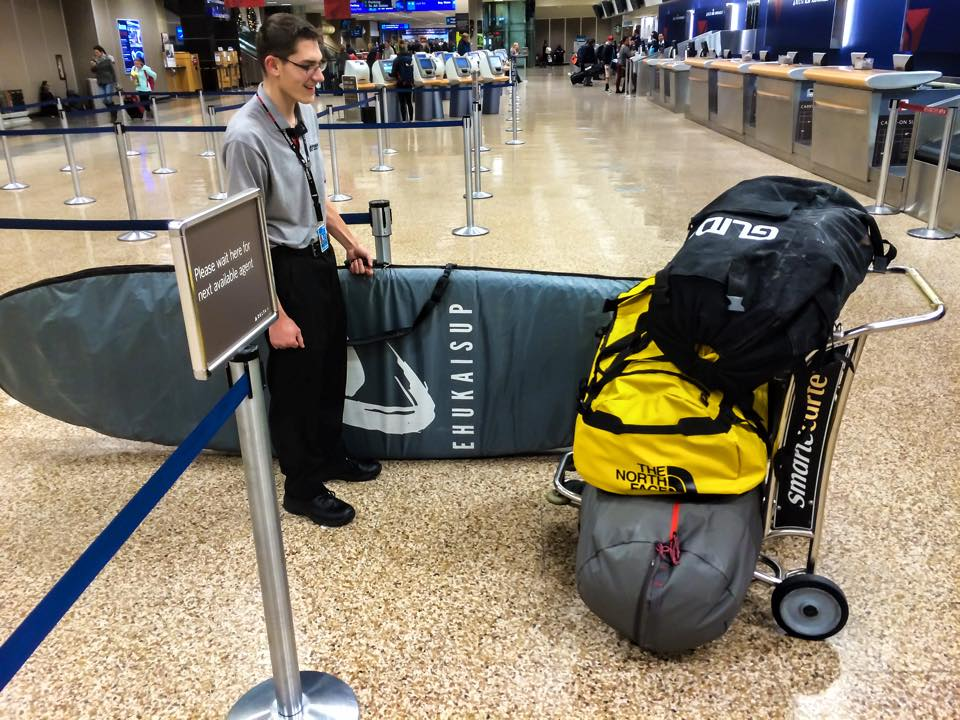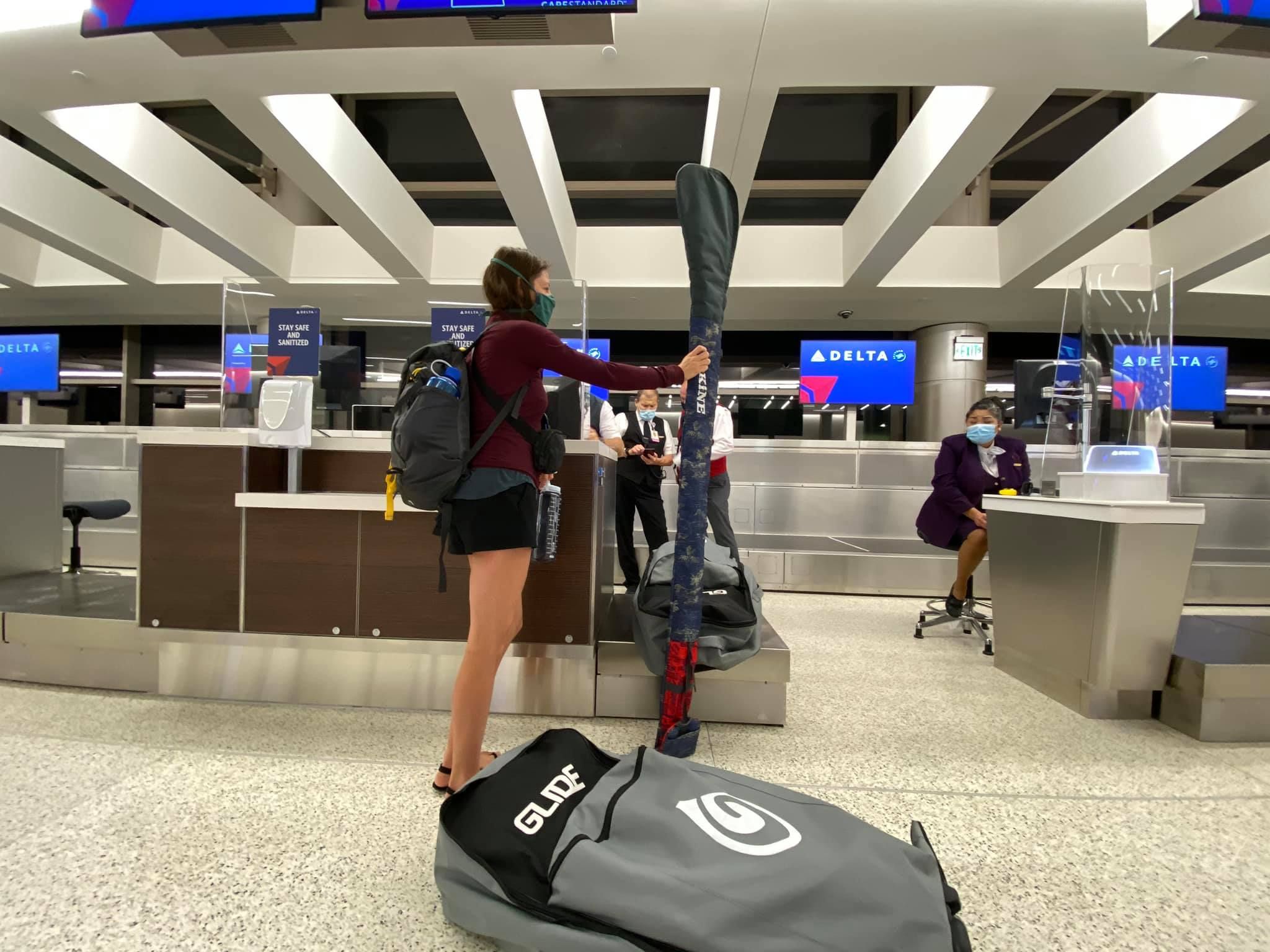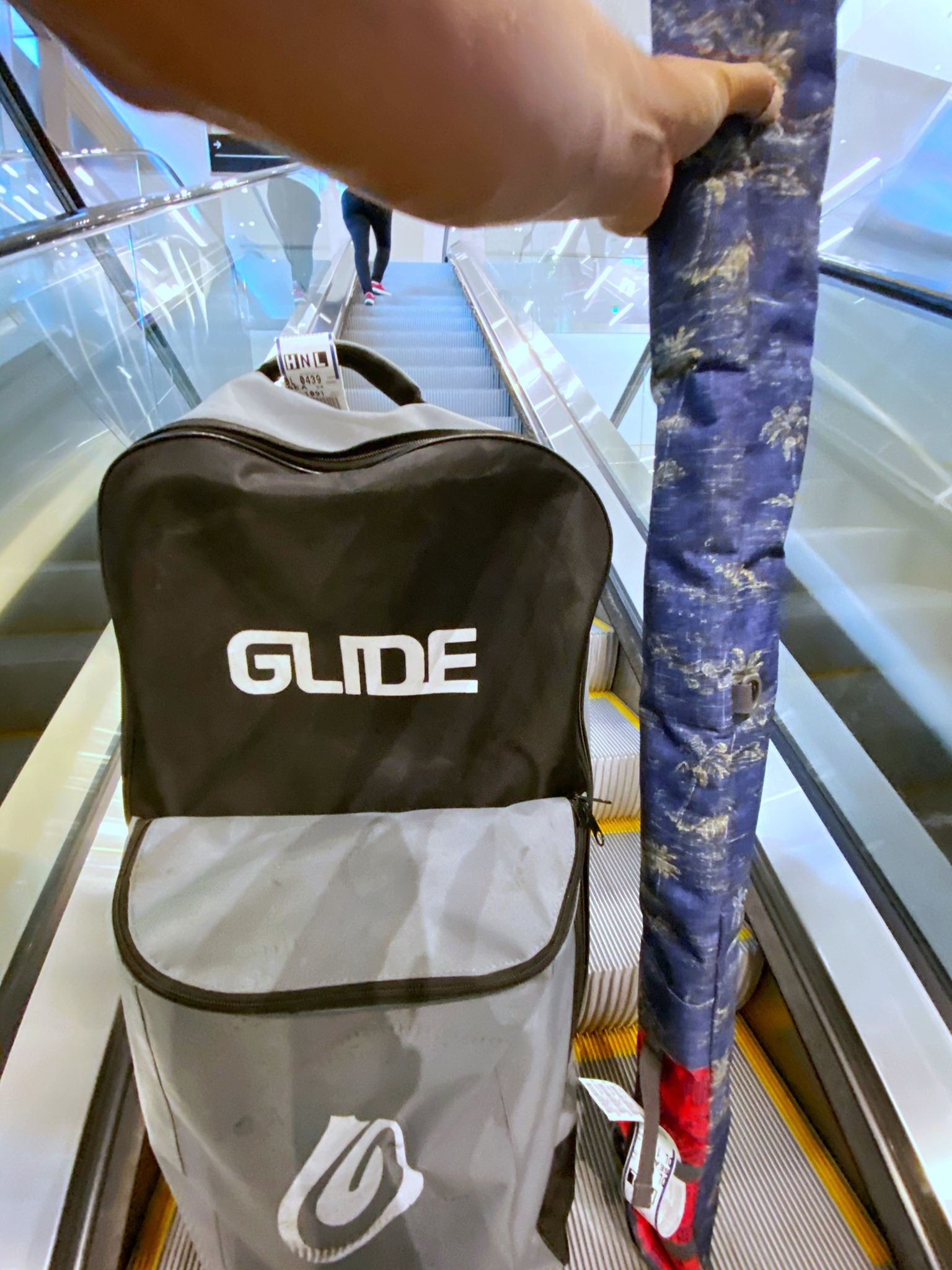
Flying with an Inflatable Paddle Board: The Ultimate Guide to Stress-Free Air Travel with Your iSUP
Flying with your inflatable paddle board is a breeze if you plan properly.

Traveling with your inflatable stand-up paddle board (iSUP) can unlock new paddle adventures in stunning destinations around the world — but only if you plan ahead. From navigating airline policies to smart packing techniques, this guide has everything you need to fly with your inflatable paddle board like a seasoned traveler.
Why Fly with an Inflatable SUP?
The beauty of inflatable paddle boards lies in their portability. Unlike rigid boards, iSUPs can deflate and roll into a backpack, allowing you to:
-
Avoid rental fees and limited rental hours
-
Paddle on your own terms — wherever and whenever you want
With a bit of preparation, your iSUP can become your favorite travel companion.

1. Know Your Airline's Rules and Weight Limits
Before you even pack, check your airline’s website for their baggage weight and size restrictions. Most airlines allow up to 50 lbs for checked bags, but some (like Spirit Airlines) only allow 40 lbs.
✅ Pro Tip: Weigh your fully packed SUP bag at home to avoid unexpected fees at the airport. Use the leftover weight allowance for personal gear or accessories.
Although SUP travel bags may push size limits, they are soft-sided and often go unnoticed when not overstuffed. Tighten external cinch straps to reduce bulk and keep contents stable.
2. Use a Wheeled SUP Travel Bag
If your inflatable SUP didn’t come with a wheeled travel bag, consider investing in one. Wheels make it much easier to navigate airports, while backpack straps are helpful for rough terrain.
If you have an ultralight board designed to be carried, you may skip the wheels — but if you're checking it anyway, a full-size wheeled bag can also fit your paddle, pump, PFD, and more.
3. Make a Paddle Board Travel Checklist
There’s nothing worse than arriving at your destination and realizing you forgot your fins. Avoid this by keeping a travel checklist in your SUP bag.
Here’s a solid list to start with:
-
Dry bag
-
PFD (life vest or inflatable belt)
-
Patch kit
-
Paddle board attire (hat, rash guard, water shoes, etc.)
-
Sunglasses with retainer strap
✅ Pro Tip: Store your checklist in a zippered compartment in your bag so it’s always handy.

4. Pack Smart to Prevent Damage
Even inflatable boards can get dinged in transit if not packed properly. Use these best practices:
-
Wrap fragile accessories (like your paddle and fins) inside your board as you roll it up.
-
Place soft items (like your clothes or towel) around vulnerable gear for extra padding.
-
Tighten external straps to prevent gear from shifting inside the bag.
5. Bring an Electric and a Manual Pump
Electric pumps are incredibly convenient — but they can break or get damaged during travel. That’s why it’s smart to also pack a manual pump as a backup.
⚠️ Important: If your electric pump includes a battery, it must go in your carry-on bag per TSA guidelines. Never check lithium batteries in your luggage.
6. Plan for Storage and Transport at Your Destination
Think ahead: where will you store your board? How will you get it to the water?
-
Hotel room: If you can’t leave your board inflated, you’ll need to inflate and deflate it each session.
-
Rental car: Request a vehicle with roof racks, or bring your own tie-down straps for rooftop transport.
-
No power source? Bring a manual pump or a rechargeable battery for your electric inflator.
7. Paddle the World: Make the Most of Your Travels
Bringing your SUP with you opens up incredible paddling opportunities that most travelers miss. Whether you’re gliding through alpine lakes, coastal bays, or island lagoons, having your own board lets you explore at your pace — no rental shack required.
Be sure to research local paddle laws and safety regulations at your destination to paddle confidently and responsibly.
Final Thoughts: Flying with a Paddle Board is Easier Than You Think
With a few smart steps, flying with your inflatable paddle board is not just doable — it’s totally worth it. Follow the tips above to avoid surprise fees, protect your gear, and enjoy the freedom to paddle wherever your journey takes you.



